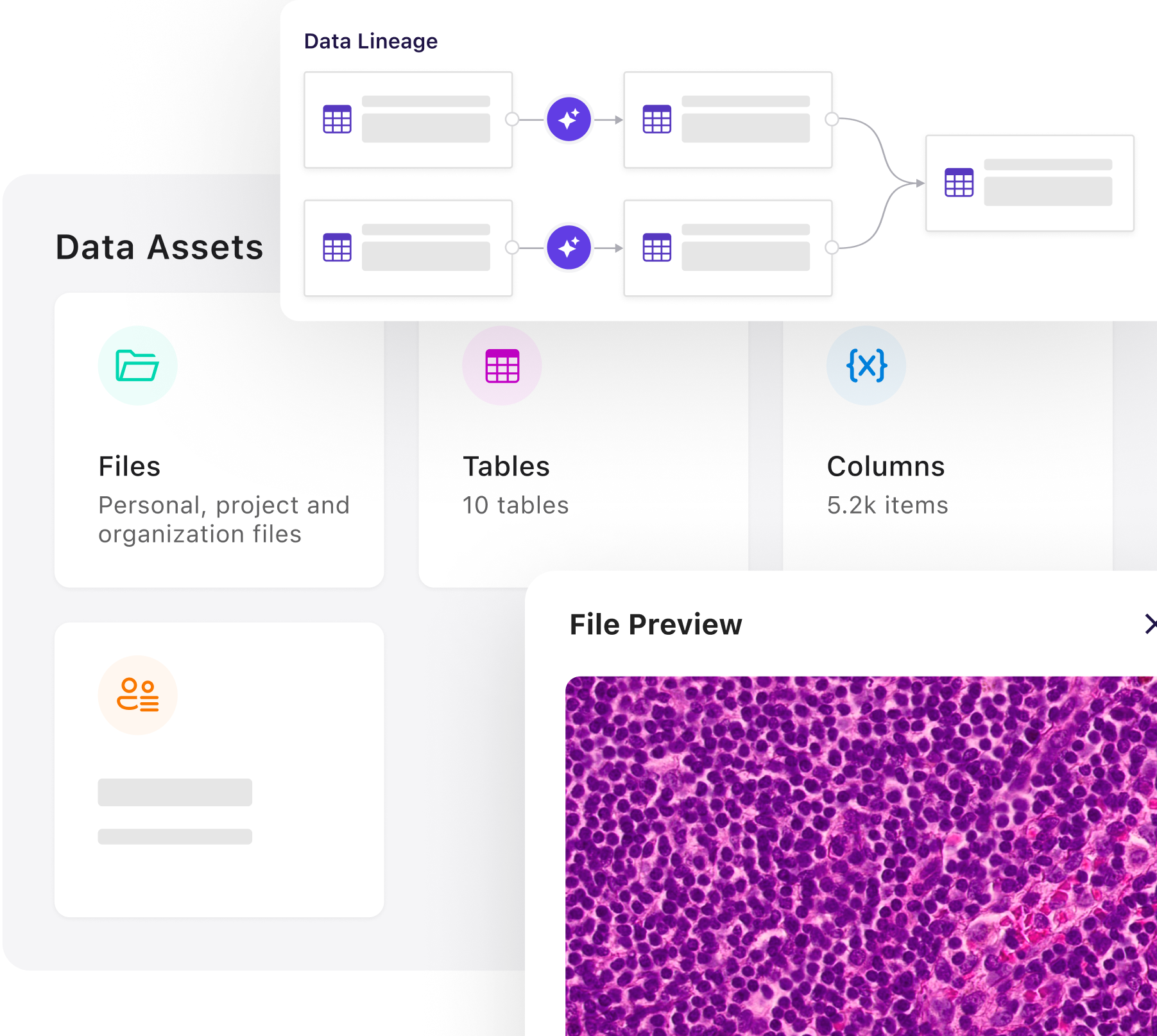Cohort Analysis
Assess data availability and cohort feasibility with precision.
Use dashboards and filtering with a limited view of the data to evaluate whether sufficient information exists for your research question. Create more detailed cohort definitions using either code-based workflows or graphical interfaces. Iterate on your inclusion and exclusion criteria, enabling you to confirm feasibility before continuing to study design.
A structured, transparent index of research-ready data
The data catalog provides a centralized inventory of datasets, tables, columns, reports, and files with associated metadata. Designed for research teams who require traceability and interpretability, the catalog includes:
- Datasets curated by data stewards for common analyses and exploratory work.
- Data dictionary including variable definitions and data types down to the column level.
- Lineage documenting how datasets and derived variables were created from source data.
This structure supports data familiarity and validation, ensuring researchers understand the data’s origin, context, and structure before beginning analysis.


Examine dataset structure and contents through visual summaries
Explore data visually using dashboards configured by data stewards or through a graphical user interface. Features include:
- Configured dashboards with key metrics and distributions relevant to typical study designs.
- Interactive tools for building or modifying visualizations without code.
- AI-enabled exploration of data allowing researchers to inspect datasets through conversational input, and export the resulting filters.
These capabilities support early-stage exploration and hypothesis refinement, helping researchers assess variable behavior, completeness, and general trends prior to formal modeling.
Evaluate research questions through structured feasibility assessments
Use platform tools to quickly generate hypotheses and assess whether available data can support further analysis.
- Apply inclusion/exclusion logic against available data to estimate cohort sizes.
- Request full provisioning when additional analysis is warranted.
These steps help researchers determine whether a question is addressable with existing data, and when further provisioning or collaboration is justified.



